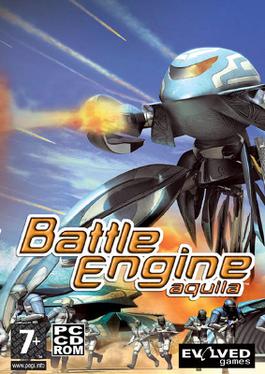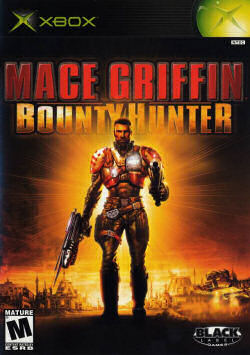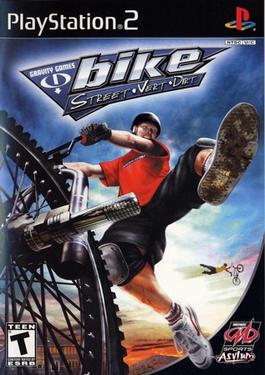
Midnight Club II is a 2003 racing video game developed by Rockstar San Diego and published by Rockstar Games. It is the sequel to Midnight Club: Street Racing, published for the PlayStation 2, Xbox and Microsoft Windows and first in series to feature motorcycles. Players can race through cities based on Los Angeles, Paris, and Tokyo. The game also features an online multiplayer component. It is the second game in Midnight Club franchise, followed by Midnight Club 3: DUB Edition.

James Bond 007: Nightfire is a 2002 first-person shooter video game published by Electronic Arts for the GameCube, PlayStation 2, Xbox and Microsoft Windows, with additional versions released for the Game Boy Advance in 2003, and the Mac OS X in 2004. The computer versions feature modifications to the storyline, different missions and the removal of driving sections used in home console versions.

Indiana Jones and the Emperor's Tomb is a 2003 action-adventure video game developed by The Collective and published by LucasArts for the Xbox, Microsoft Windows, PlayStation 2 and OS X. It features cover art by Drew Struzan. The game is an adventure of fictional archeologist Indiana Jones. The story takes place in 1935, acting as a prequel to Indiana Jones and the Temple of Doom. The tomb mentioned in the title is that of China's first Emperor Qin Shi Huang.

Driver 3 is a 2004 action-adventure game, the third installment in the Driver series. It was developed by Reflections Interactive, published by Atari, and released on PlayStation 2, Xbox and mobile phones in June 2004, Microsoft Windows in March 2005, and Game Boy Advance in October 2005. The game's story focuses on players assuming the role of John Tanner, an undercover FBI agent, as he investigates a car-smuggling ring across three countries, in order to identify and arrest its boss and learn who they are planning to sell a cache of stolen cars to. The game expanded upon its predecessors with on-foot sections, gun combat, and drive-by shooting, with virtual recreations of three major cities - Miami, Nice, and Istanbul - free-roam game mode, and an improvement to the series' film-making "director mode".

Tony Hawk's Pro Skater 3 is a 2001 skateboarding video game and the third installment in the Tony Hawk's series. It was developed by Neversoft and published by Activision under the Activision O2 label in 2001 for the PlayStation, PlayStation 2, Game Boy Color and GameCube. In 2002, it was published for the Xbox, Game Boy Advance, Microsoft Windows, Mac OS, and the Nintendo 64. It was the final official release for the Nintendo 64, the first game released for the PlayStation 2 supporting online play and was a launch title for the GameCube in North America.

Red Faction II is a first-person shooter video game developed by Volition and published by THQ for the PlayStation 2, GameCube, Windows and Xbox. It is the sequel to Red Faction and the second installment in the Red Faction series. The game changed the direction of the first game by introducing a greater emphasis on action and a new setting on Earth, rather than Mars.

Need for Speed: Underground is a 2003 racing video game and the seventh installment in the Need for Speed series. It was developed by EA Black Box and published by Electronic Arts. Three different versions of the game were produced: one for consoles and Microsoft Windows, and another for the Game Boy Advance. An arcade version was additionally developed by Global VR, and was published by Konami with assistance from Electronic Arts.

Freedom Fighters is a 2003 third-person shooter video game for the PlayStation 2, GameCube, Xbox, and Microsoft Windows. It was developed by IO Interactive and published by Electronic Arts.

Need for Speed: Hot Pursuit 2 is a 2002 racing video game, the sixth installment in the Need for Speed series and the sequel to 1998's Need for Speed III: Hot Pursuit. It was developed by EA Black Box for the PlayStation 2, and by EA Seattle for GameCube, Xbox, and Microsoft Windows. It features cars from various high-performance and exotic car manufacturers. Players can compete in races using these cars, or opt to play as a police officer and pursue speeders.

25 to Life is a third-person shooter video game developed by Avalanche Software and Ritual Entertainment and published by Eidos Interactive for Microsoft Windows, PlayStation 2, and Xbox and released in 2006.

Madden NFL 2003 is an American football simulation video game based on the NFL that was developed by EA Tiburon and Budcat Creations and published by EA Sports. The 14th installment of the Madden NFL series, the game features former St. Louis Rams running back Marshall Faulk on the cover. This edition of Madden was the first to have EA Trax, the Mini Camp mode, and to feature Al Michaels as play-by-play announcer, who took over for Pat Summerall. Although it featured the expansion Houston Texans and the relocation of the Seattle Seahawks to the NFC, it was actually the second to do so. The game was released on August 12, 2002 for the Game Boy Advance, GameCube, Microsoft Windows, PlayStation, PlayStation 2 and Xbox. The PlayStation version also includes the Sega Genesis version of John Madden Football 93.

NBA Live 2003 is the 2002 installment of the NBA Live video games series. The cover features Jason Kidd as a member of the New Jersey Nets. The game was developed by EA Canada and released on October 8, 2002 for the PlayStation, PlayStation 2, Xbox, and GameCube consoles and November 14, 2002 for Microsoft Windows. It was the last NBA Live game to be released on the original PlayStation. The game includes a soundtrack, which is the first video game soundtrack in history to be certified Platinum by the RIAA, selling over 1,300,000 copies worldwide.

Tiger Woods PGA Tour 2003 is a sports video game developed by EA Redwood Shores for the Xbox, PlayStation 2 and GameCube versions and Headgate Studios for the Microsoft Windows and Mac OS versions and published by EA Sports.

Battle Engine Aquila is a 2003 video game for PlayStation 2 and Xbox developed by Lost Toys and published by Infogrames Europe. In the game the player pilots the Battle Engine for the Forseti military in their wars against the Muspell to decide who will rule what's left of the world. Battle Engine Aquila received little attention from the public despite overall good reviews from critics. It was listed as #86 in the Top 100 Games for PlayStation 2 by IGN. A later Microsoft Windows port was published by Encore Software.

Conflict: Desert Storm is a tactical shooter video game developed by Pivotal Games and published by SCi Games and Gotham Games for Microsoft Windows, PlayStation 2, Xbox, and GameCube; it is the first installment in the Conflict series. Another game of the same name was produced for Mobile phones, developed by Synergenix and published by Kayak Interactive.

Mace Griffin: Bounty Hunter is a first-person shooter video game developed by Warthog Games, published by Black Label Games and released for the PlayStation 2, Xbox and Microsoft Windows. A GameCube version was in development, but was cancelled.

MTX Mototrax is a racing video game developed by Left Field Productions and published by Activision for PlayStation 2 and Xbox in 2004. It was released for Microsoft Windows and Mac OS X later that year developed by Beenox and published by Aspyr. It was also released in 2006 for the PlayStation Portable. Additional releases were planned for the GameCube console in 2004, which was later canceled, and Tapwave Zodiac, which was called off when Tapwave went out of business. A demo version of the game is available in the options menu in the PlayStation 2 version of Tony Hawk's Underground.

MX Superfly featuring Ricky Carmichael, released as MX Super Fly in PAL regions, is a motorcross racing game developed by Pacific Coast Power & Light and published by THQ for the Xbox, PlayStation 2, and GameCube. It is the second installment of THQ's MX trilogy and a sequel to MX 2002 featuring Ricky Carmichael, garnering professional motorcross racer Ricky Carmichael's endorsement like its predecessor.

Gravity Games Bike: Street Vert Dirt is a sports video game developed and published by Midway for the PlayStation 2 and Xbox. It was released in North America on June 27, 2002 for the PlayStation 2 and on September 4, 2002 for the Xbox. It was the only game released under the Gravity Games license by Midway.




















